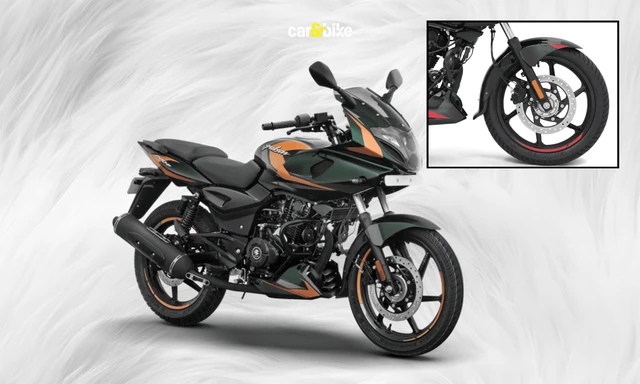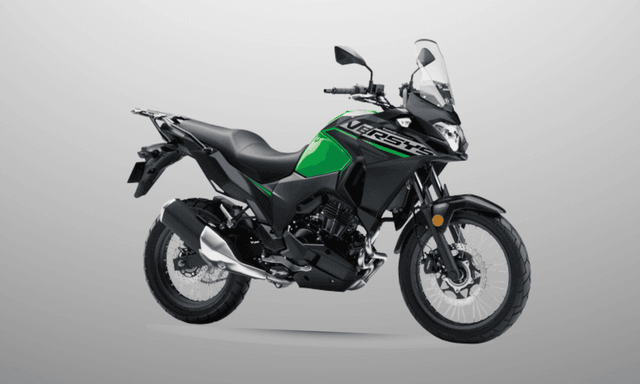Different Types of Hybrid Vehicles to Choose From

- Hybrid vehicles have a much higher resale value as compared to gasoline
- Hybrid vehicles can last up to 10-15 years if maintained properly!
- Regenerative braking is one of the major technologies to save fuel
The times have changed, people have changed and so have their modes of transportation. Gasoline vehicles are quickly being replaced now by hybrid vehicles. Hybrid vehicles are those vehicles that combine internal combustion engines with electric motors to power the car. Hybrid vehicles are now actively being manufactured by automobile companies due to their growing demand across the country. Let's find out more about the different types of hybrid vehicles that exist in the world today!

Photo Credit: pixabay.com
Mild hybrid vehicles
Mild hybrid vehicles can be classified as the most basic hybrid vehicles. The starter motor is replaced with a smaller motor called a belt-driven starter generator. The major aim of these motors is to help petrol or diesel engines to work more economically, improving fuel efficiency (like saving fuel when the car is accelerating). Mild hybrid vehicles are also known as MHEVs. These systems are pretty cheap, given that they have basic technologies at work here.
Vehicular coasting is linked with the process of regenerative braking in these vehicles. The energy applied to brake pads is converted to electrical energy, which charges the batteries further.
Examples: Volvo's B4/B5, Honda's IMA, Audi's or Skoda's mHEV

Photo Credit: pixabay.com
Series hybrid vehicles
The battery and motor are much bigger and more powerful compared to mild hybrid vehicles. These vehicles are much more fuel-efficient.
The system works very smoothly depending on the conditions. At low speeds or short distances, the motors are enough to power the engine without any need for the engine to provide power to drive the vehicle. At higher speeds or longer distances, the engine is involved in driving the vehicle.
Examples: Toyota's Hybrid Synergy Drive, Subaru's e-Boxer Hybrid, BMW's ActiveHybrid
Plug-in hybrid vehicles
The battery is of much higher capacity thus needs to be recharged regularly. One of the major advantages of these vehicles is that they can travel long distances on batteries alone instead of traditional engines!
The lower emissions from the cars are one of the best things about these hybrids. The engines are restricted in their functioning, thus reducing emissions.
Examples: Audi's TSFle, BMW's eDrive, Porsche's E-Hybrid, Volvo's Twin-Engine

Photo Credit: pixabay.com
Range-extender electric vehicles
The major difference between these vehicles and the rest of the hybrids is that the engine doesn't propel the vehicle in any way. The engine purely acts as a generator for the battery of the vehicle. Fun fact, the engines don't come into play unless the battery's charge falls down a certain limit. These are not traditionally refueled in gas stations, unlike how other hybrid vehicles or gasoline vehicles would be filled.
Also, the engines are used when there is no plug-in option available for the driver!
Examples: BMW's Rex, GM's E-Rev
Hybrid engines have enjoyed considerable popularity with car buyers as they ensure better fuel efficiency and driving experience.
Trending News
 1 min readTriumph Tracker 400: In Pictures
1 min readTriumph Tracker 400: In Pictures 1 min readTriumph Tracker 400 Unveiled in UK
1 min readTriumph Tracker 400 Unveiled in UK
Latest News
 Janak Sorap | Dec 17, 2025Triumph Tracker 400: In PicturesTriumph has unveiled the new Tracker 400 based on the Speed 400. Here’s a quick look at the motorcycle in pictures.1 min read
Janak Sorap | Dec 17, 2025Triumph Tracker 400: In PicturesTriumph has unveiled the new Tracker 400 based on the Speed 400. Here’s a quick look at the motorcycle in pictures.1 min read Jaiveer Mehra | Dec 17, 2025Tata Sierra Smart Plus Revealed In Official Pictures: What Do You Get For Rs 11.49 Lakh?While nearly everyone has seen the Sierra in pictures and many in person at dealerships, you’ll likely only have seen the top models. But what is the base variant like?2 mins read
Jaiveer Mehra | Dec 17, 2025Tata Sierra Smart Plus Revealed In Official Pictures: What Do You Get For Rs 11.49 Lakh?While nearly everyone has seen the Sierra in pictures and many in person at dealerships, you’ll likely only have seen the top models. But what is the base variant like?2 mins read car&bike Team | Dec 17, 20252025 Ducati Panigale V2, Streetfighter V2 Recalled In The USThe recall states that two ABS fuses may have been inadvertently fitted in the wrong positions during wiring assembly and could increase the risk of a crash.3 mins read
car&bike Team | Dec 17, 20252025 Ducati Panigale V2, Streetfighter V2 Recalled In The USThe recall states that two ABS fuses may have been inadvertently fitted in the wrong positions during wiring assembly and could increase the risk of a crash.3 mins read Jafar Rizvi | Dec 17, 2025Updated Bajaj Pulsar 220F Does Not Get Dual-Channel ABS; Company Issues ClarificationBajaj Auto has confirmed that the updated Pulsar 220F does not feature dual-channel ABS, contradicting earlier reports.1 min read
Jafar Rizvi | Dec 17, 2025Updated Bajaj Pulsar 220F Does Not Get Dual-Channel ABS; Company Issues ClarificationBajaj Auto has confirmed that the updated Pulsar 220F does not feature dual-channel ABS, contradicting earlier reports.1 min read Janak Sorap | Dec 16, 2025Triumph Tracker 400 Unveiled in UKBased on the Speed 400’s platform with the tune from the Thruxton 400.1 min read
Janak Sorap | Dec 16, 2025Triumph Tracker 400 Unveiled in UKBased on the Speed 400’s platform with the tune from the Thruxton 400.1 min read car&bike Team | Dec 16, 2025Kawasaki Versys-X 300 Offered With Rs 25,000 DiscountAfter the discount, the entry-level Kawasaki Adventurer tourer is priced at Rs 3.24 lakh (ex-showroom).3 mins read
car&bike Team | Dec 16, 2025Kawasaki Versys-X 300 Offered With Rs 25,000 DiscountAfter the discount, the entry-level Kawasaki Adventurer tourer is priced at Rs 3.24 lakh (ex-showroom).3 mins read
 Janak Sorap | Dec 11, 2025Harley-Davidson X440 T First Ride Review: Smarter and SharperHarley-Davidson has taken the X440 and given it a more focused and engaging twist. The result is the X440 T—essentially the same platform but updated in areas that give the motorcycle more appeal and riders more thrill.5 mins read
Janak Sorap | Dec 11, 2025Harley-Davidson X440 T First Ride Review: Smarter and SharperHarley-Davidson has taken the X440 and given it a more focused and engaging twist. The result is the X440 T—essentially the same platform but updated in areas that give the motorcycle more appeal and riders more thrill.5 mins read Shams Raza Naqvi | Dec 10, 20252025 Mini Cooper Convertible Review: More Colour On Indian RoadsThe updated Mini Cooper Convertible is set to be launched in the Indian market in the next few days. We drive it around Jaisalmer for a quick review.1 min read
Shams Raza Naqvi | Dec 10, 20252025 Mini Cooper Convertible Review: More Colour On Indian RoadsThe updated Mini Cooper Convertible is set to be launched in the Indian market in the next few days. We drive it around Jaisalmer for a quick review.1 min read Bilal Firfiray | Dec 8, 2025Tata Sierra Review: India’s New Favourite?Marking its return after a few decades, the reborn Sierra has made everyone sit up and take notice. But is it worth the hype?10 mins read
Bilal Firfiray | Dec 8, 2025Tata Sierra Review: India’s New Favourite?Marking its return after a few decades, the reborn Sierra has made everyone sit up and take notice. But is it worth the hype?10 mins read Girish Karkera | Dec 4, 20252026 Honda Prelude First Drive: Domesticated Civic Type RA sporty-looking coupe built to give customers a taste of performance but not at the expense of everyday practicality.5 mins read
Girish Karkera | Dec 4, 20252026 Honda Prelude First Drive: Domesticated Civic Type RA sporty-looking coupe built to give customers a taste of performance but not at the expense of everyday practicality.5 mins read Seshan Vijayraghvan | Nov 29, 2025Mahindra XEV 9S First Drive Review: Big Electric SUV, Bigger ExpectationsThe XEV 9S lands at a time when the EV crowd is growing fast. It’s a big, born-electric, three-row SUV that starts under 20 lakh. It sits close to the XUV700 in size, but the brief is very different. Here’s what it’s like on the road.11 mins read
Seshan Vijayraghvan | Nov 29, 2025Mahindra XEV 9S First Drive Review: Big Electric SUV, Bigger ExpectationsThe XEV 9S lands at a time when the EV crowd is growing fast. It’s a big, born-electric, three-row SUV that starts under 20 lakh. It sits close to the XUV700 in size, but the brief is very different. Here’s what it’s like on the road.11 mins read































































































































